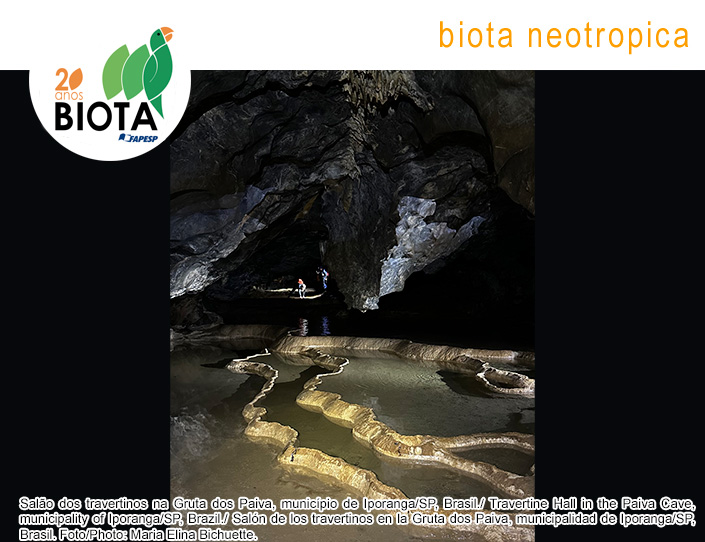Brazilian Troglophilic Biodiversity: a neglected fauna in conservation actions
Resumen
Abstract Subterranean or hypogean habitats, despite colonization filters, can harbor high biodiversity with unique fauna and significant endemism. Traditionally, this biodiversity is categorized into Trogloxenes (organisms using the hypogean realm as shelters and frequently exiting to complete their life cycle), Troglophiles (“facultative cave-dwellers”), and Troglobites (restricted to subterranean habitats), according to Schiner-Racovitza (1907). Troglophilic organisms, capable of completing their life cycles in both epigean (surface) and hypogean environments, are crucial as potential ancestors of troglobites or possible recolonizers of the epigean environment if surface populations disappear. Biodiversity studies are vital for recognizing threats and enabling effective conservation policies. However, these studies often face Linnean (richness) and Wallacean (distribution) shortfalls due to difficulties in accessing subterranean habitats and taxonomic challenges, leading to uncertainties about the diversity and distribution of subterranean animals. In hypogean habitats, biodiversity projects have largely focused on troglobites, with troglophiles historically neglected in faunistic studies. To address this, we created a database on troglophiles by surveying works that presented faunistic lists of Brazilian caves and categorizations of their fauna. We also assessed the influence of shortfalls on knowledge of troglophilic biodiversity. We cataloged 223 described troglophilic species, distributed across 51 orders and five phyla, with spiders (49 species) being the main representatives. These species are found in 18 federative states and 10 biogeographical regions in Brazil, with a higher concentration in Minas Gerais and São Paulo, which encompass the Cerrado and Paraná Forest biogeographical provinces. We observed a strong influence of both Linnean and Wallacean shortfalls on the knowledge of Brazilian troglophiles and a complement to the Racovitizian shortfall was proposed, resulting from the difficulty in categorizing an organism as a troglophile, requiring ecological-evolutionary interpretation. The database will be available for future consultation and modification on the website of the Laboratório de Estudos Subterrâneos (https://www.lesbio.ufscar.br), under the name BioTroglophileBR.Descargas
Publicado
01/01/2025
Cómo citar
Duarte, M. V. da S. A., Gallão, J. E., & Bichuette, M. E. (2025). Brazilian Troglophilic Biodiversity: a neglected fauna in conservation actions. Biota Neotropica, 25(3). Recuperado a partir de https://www.biotaneotropica.org.br/BN/article/view/2124
Número
Sección
Artículos
